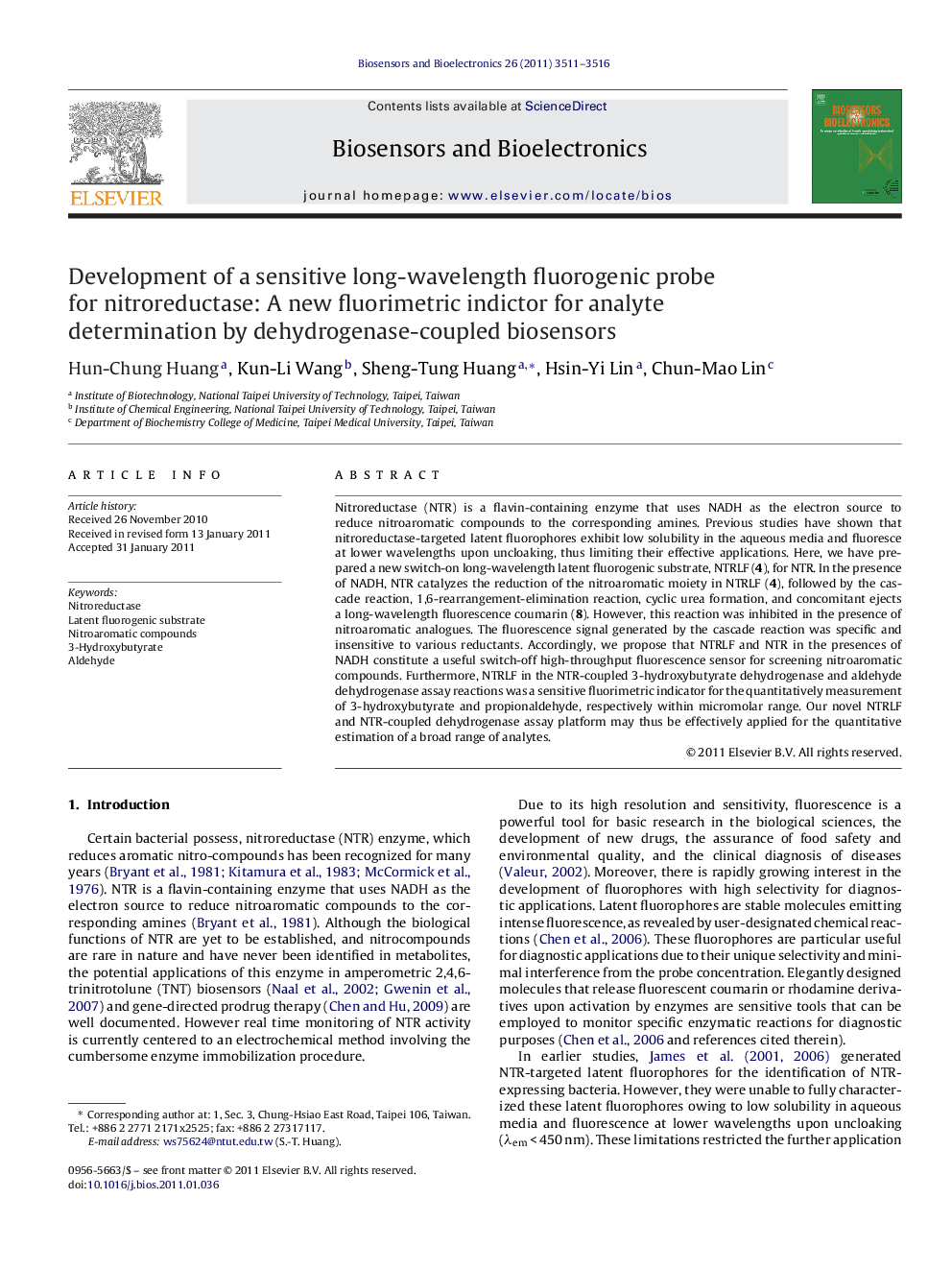| Article ID | Journal | Published Year | Pages | File Type |
|---|---|---|---|---|
| 867801 | Biosensors and Bioelectronics | 2011 | 6 Pages |
Nitroreductase (NTR) is a flavin-containing enzyme that uses NADH as the electron source to reduce nitroaromatic compounds to the corresponding amines. Previous studies have shown that nitroreductase-targeted latent fluorophores exhibit low solubility in the aqueous media and fluoresce at lower wavelengths upon uncloaking, thus limiting their effective applications. Here, we have prepared a new switch-on long-wavelength latent fluorogenic substrate, NTRLF (4), for NTR. In the presence of NADH, NTR catalyzes the reduction of the nitroaromatic moiety in NTRLF (4), followed by the cascade reaction, 1,6-rearrangement-elimination reaction, cyclic urea formation, and concomitant ejects a long-wavelength fluorescence coumarin (8). However, this reaction was inhibited in the presence of nitroaromatic analogues. The fluorescence signal generated by the cascade reaction was specific and insensitive to various reductants. Accordingly, we propose that NTRLF and NTR in the presences of NADH constitute a useful switch-off high-throughput fluorescence sensor for screening nitroaromatic compounds. Furthermore, NTRLF in the NTR-coupled 3-hydroxybutyrate dehydrogenase and aldehyde dehydrogenase assay reactions was a sensitive fluorimetric indicator for the quantitatively measurement of 3-hydroxybutyrate and propionaldehyde, respectively within micromolar range. Our novel NTRLF and NTR-coupled dehydrogenase assay platform may thus be effectively applied for the quantitative estimation of a broad range of analytes.
